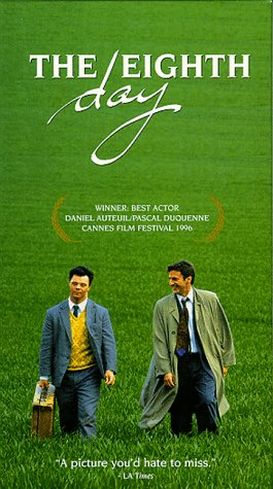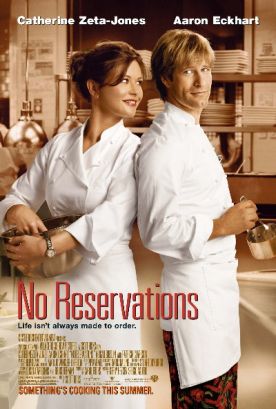Artist, The
The Artist, by the French director Michel Hazanavicius, begins with the noise of an old-fashioned projector and a black screen. Music then comes up, a jazzy tune reminiscent of the 1920s without being quite of the period. The titles which then appear are entirely of the period, known to us now as “the silent era” — as is what we are soon seeing on the screen, which is a lurid adventure yarn in living black-and-white. Called “A Russian Affair,” the movie has reached a peak of excitement as the hero, George Valentin (Jean Dujardin), is being tortured with an electrical current through his head, administered by a couple of sinister-looking Russians. “I won’t talk!” he cries to his torturers by means of a dialogue title printed on the screen. “I won’t say a word” — a promise which the film allows him to keep in spite of the word he has just supposedly spoken. “Speak!” the Russians command him, also by inter-title. But he remains silent — then and throughout both that film and the one we are watching.
It is a good joke and one that Mr Hazanavicius returns to several times, as when he shows Valentin gathered with his fellow stars on the other side of the screen, awaiting their cue to appear for a curtain call at the film’s premiere under a sign reading “Please be silent behind the screen.” Later, his wife (Penelope Ann Miller) ominously says — again in print, of course — to Valentin: “We have to talk, George.” Alas, George has already told Al Zimmer (John Goodman), the studio boss of Kinograph pictures what he told the sinister Russians, namely that he’s not talking. Shown his first talkie, George tells Al via another dialogue title, “If that’s the future, you can have it.” Well, Al does and he doesn’t. Sticking with silence, he takes a bath with a self-produced film in which we see his character sinking into quicksand at the end. Virtually overnight, he’s all washed up.
While he is on his way down in the quicksand of post-crash 1929, sinking into despair and alcoholism and, therefore, cliché, a young ingenue called Peppy Miller (Bérénice Bejo), with whom he has had a brief but unforgettable flirtation in his glory days, is on her way up. She becomes, in one of the film’s few false notes, a “superstar.” For although the OED gives a date of 1925 for the first appearance of this word, I think for most people at the time just being a star was quite enough hype to be going on with — and quite enough, too, to make the familiar, melodramatic point that youth must be served and the old must give way to the young — as the wounded and failing George overhears Peppy saying to an interviewer. But this isn’t, quite, A Star is Born, for we also know from the larger-than-life faces of these two extraordinarily attractive people — which are all that we have to go on, after all — that their love is a different and brighter cliché. That conquers everything will go without saying.
George’s trademark on screen and off is his little Jack Russell terrier. “If only he could talk,” he says of this beast, though his own words are equally unheard. The inarticulate but obviously highly trained animal is also a reminder of the origin of the movies in vaudeville — where animal acts had absence of speech in common with early movies. Both were necessarily founded on familiar conventions, also known as clichés, but at their best — as they are in The Artist — these are clichés which preserve, somehow, an unexpected freshness. In The Artist this is owing, I think, to the unfamiliarity of modern audiences with the conventions of silent film. So much can be conveyed in the absence of speech partly because the absence of speech is, to us, so shocking and unusual. I think that our visual sense must be more acute in compensation as well, for we are continually struck by the long-forgotten silent-movie experience, especially the larger than life beauty of the two principals and, therefore, of their not quite tragic love for each other.
To me, at any rate, it was like watching the familiar story for the first time. The unfamiliar context created sorrow at the lovers’ partings and joy at their reunions that would hardly have been possible in a more straightforward — and spoken — telling. The movie is a love story, but the yearning it expresses is not just of two people for each other but of a whole world for articulacy and understanding. At one point George has a dream where everything around him makes its appropriate noise — all noises we can hear on the sound-track — and only he is mute. Maybe, too, I was moved partly by the evidence that Hollywood story-telling is not quite dead after all, as I have so often suspected it is in recent years. Although the movie was made principally by French people, there was enough of a Hollywood presence in it, even beyond the setting in the Southern California of the heroic period, to make it a hopeful sign and an example to its models and idols to return to their roots.
Discover more from James Bowman
Subscribe to get the latest posts to your email.






